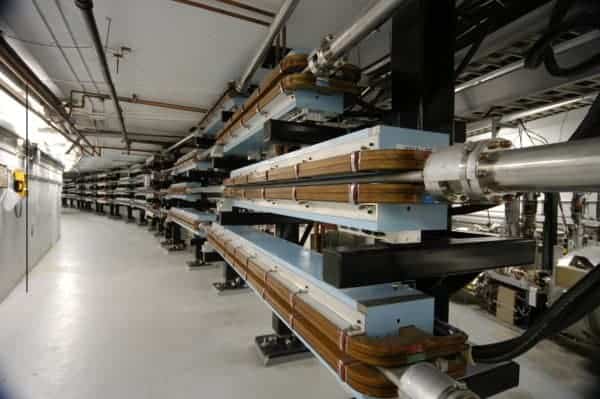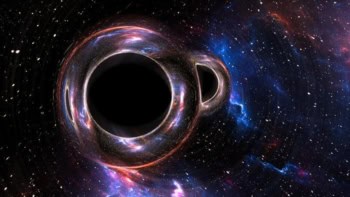
A massive $310m upgrade to the Thomas Jefferson National Accelerator Facility in Virginia has been approved, which will provide physicists with beams of 12 GeV electrons to study the fundamental structure of protons and neutrons. The upgrade will allow scientists to investigate the origins of why quarks — fundamental building blocks of matter — do not exist on their own.
“The upgrade is really a big deal for us. It will also enable us to maintain the 1200 users per year that use our facility from around the world,” Jefferson lab director Hugh Montgomery told physicsworld.com. Construction is expected to start in January with the upgrade ready by 2015.
Researchers at Jefferson currently use beams of 6 GeV electrons produced from the Continuous Electron Beam Accelerator Facility (CEBAF). This is a 1500 m long oval-shaped track built 25 m underground that accelerates electrons by using superconducting radio-frequency (SRF) modules, which are radio frequency cavities coated in a superconducting material.
Inner secrets
The beam smashes into the experimental targets and huge detectors collect the fragments. By studying the speed, direction and energy of the scattered fragments, scientists can unveil the inner secrets of protons and neutrons to test quantum chromodynamics and the Standard Model of particle physics.
The new money, announced yesterday by the US Department of Energy (DOE), will let the lab build ten new SRF modules on top of the 40 currently used now. Higher energy electrons will allow higher momentum transfer — corresponding to smaller distance scales — so that the beams of 12 GeV electrons will enable researchers to produce “exotic” mesons that will provide clues into why quarks do not exist on their own. If these mesons are not found then it could mean that our understanding of the fundamental theory of quantum chromodynamics would have to be revised.
When the electrons are accelerated they are then sent to three separate experimental halls that house spectrometers and detectors. As part of the upgrade, a new experimental hall will also be built, which will use the full 12 GeV energy to perform exotic meson spectroscopy — a new technique at the lab.
‘What’s going on in the nucleon’
The three remaining halls will also be improved to enable researchers to take advantage of 11 GeV electron beams that will allow the exploration of quark-gluon structure of hadrons – particles composed of quarks and gluons — as well as performing tests of the Standard Model of particle physics. “The upgrades to existing experiments will able us to get a full 3D picture of what’s going on in the nucleon,” says Allison Lung, deputy project manager for the upgrade.
The Jefferson lab operates with a budget of $100m per year and is funded by the DOE, which yesterday gave the go-ahead for construction known as critical decision three.



